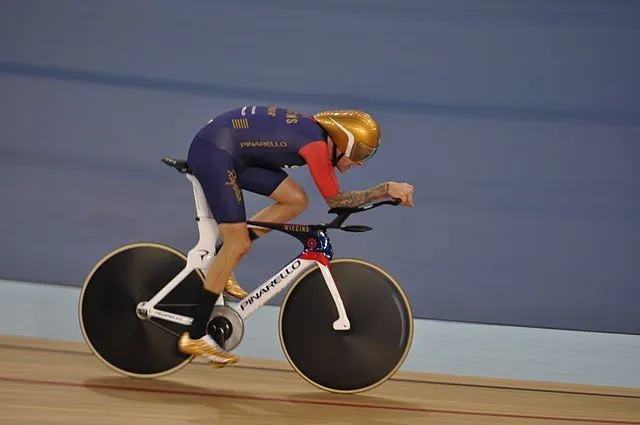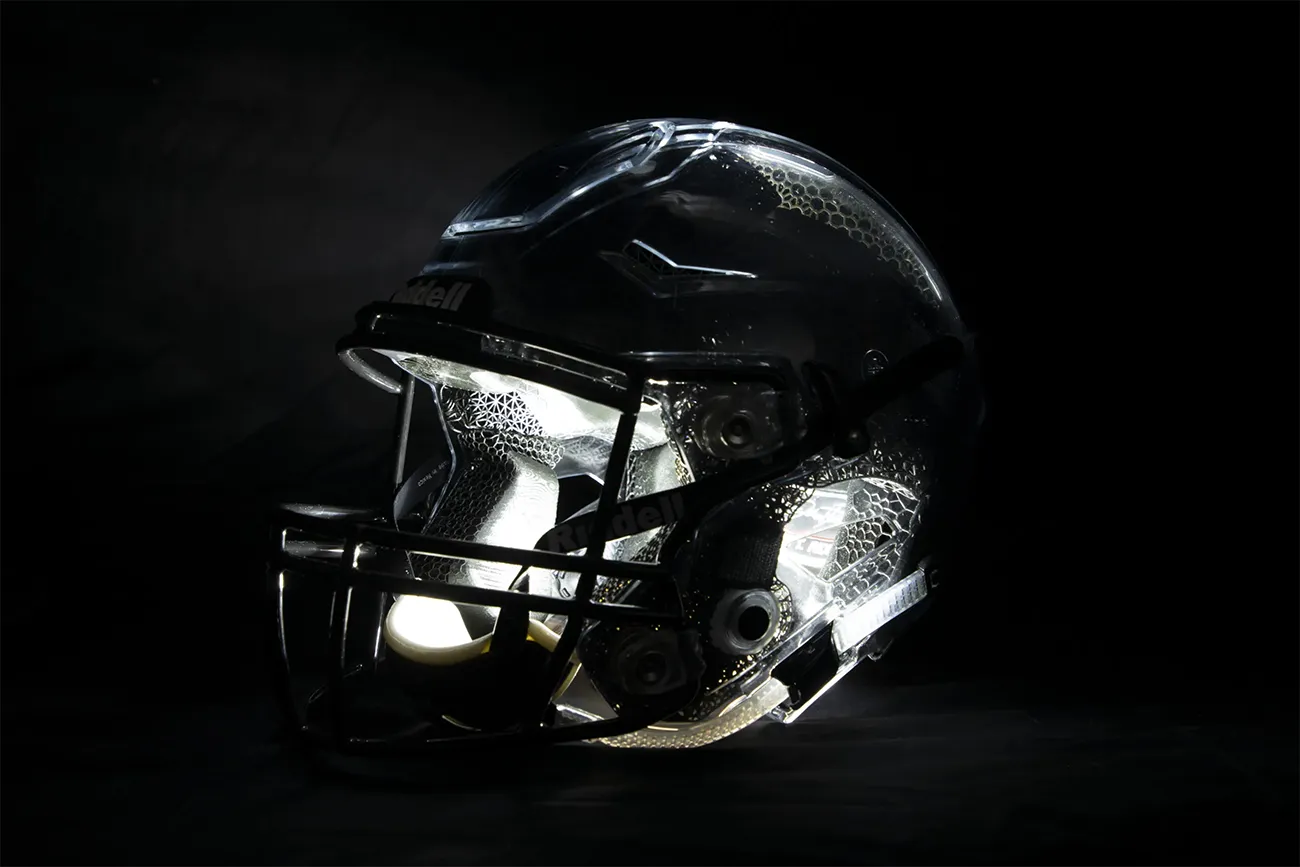
What applies in many other industries also applies to sports: 3D printing enables individual customization for performance enhancement and competitiveness, reduces production times, and lowers manufacturing costs. In professional and amateur sports, personalized mouthguards from 3D printers or sports helmets with 3D-printed padding have become a reality. Some major sports equipment manufacturers (Adidas, Nike, Under Armour) are already using 3D printing for the design and production of their products. In addition to sportswear, there are numerous other applications for 3D printing in the sports sector. Particularly, users of protective equipment benefit from additive manufacturing, but also prosthetics and custom grips are increasingly being manufactured additively. Even sports equipment or components thereof are now being produced through 3D printing.
Protective Equipment
When it comes to sports protective equipment (protectors), it’s like shoe insoles—they come in various sizes and shapes. However, finding those that fit you personally can be difficult. This is where 3D printing comes into play. 3D technologies make it possible to manufacture protective equipment customized to fit the leg, hand, arm, head, etc. (Riddell helmets). Perhaps not yet at the prices that mass production achieves, but still within a reasonable time frame and at decreasing costs.

Grips and Gloves
Each hand is unique, and so is the way each person grips objects. Especially in repetitive hand movements, even small changes to grips can make a difference in an athlete’s performance. Here, 3D printing showcases one of its strengths: the ability to manufacture customized grips tailored to the user. These personalized grips adapt to the technical peculiarities of the sport and, most importantly, to the individual characteristics of the athlete. For wheelchair racing, for example, special gloves are needed for athletes, and these can also be additively manufactured. At the Beckman Institute at the University of Illinois, such racing gloves are being developed and produced. This collaboration enables athletes to significantly reduce the costs of these specialized gloves.
Sie sehen gerade einen Platzhalterinhalt von Standard. Um auf den eigentlichen Inhalt zuzugreifen, klicken Sie auf den Button unten. Bitte beachten Sie, dass dabei Daten an Drittanbieter weitergegeben werden.
Weitere Informationen
Development of racing gloves for wheelchair racing at Ingenium Manufacturing.
Source: YouTube/Beckman Institute at the University of Illinois
Prosthetics
Prosthetics are still primarily produced using “traditional” methods. However, the share of 3D printing in this field is increasing. The key advantages of additively manufactured prosthetics are the short production time, low costs, and high precision with which the prosthesis can be made. The individual customization of prosthetics helps enable impaired athletes to participate in sports and even enhance their athletic performance. In the area of parasports, where financial resources are not as abundant, 3D printing can improve the material situation of athletes.
Sports Equipment
In addition to aiming to enable athletes to achieve higher performance, additive manufacturing methods are also used to improve sports equipment. Currently, there is a focus on enhancing bicycle frames (lighter, more aerodynamic) or adapting handlebars and forearm rests to the athlete and their specific usage. The 3D print also provides meaningful support for athletes with physical disabilities. The British Olympic wheelchair basketball team already used 3D printing in 2016 to individually customize their wheelchairs for users. In amateur sports, 3D printing is increasingly finding applications, mainly in the area of optical and/or ergonomic customization, for example, in golf clubs. Currently, the most well-known application is Adidas’ “4D” sports shoes, whose soles are 3D printed.

Conclusion
The most significant improvements from 3D printing currently benefit athletes with physical disabilities. In the field of prosthetics and improving the handling of sports equipment, additive manufacturing methods can make a significant contribution to enabling participation for para-athletes and improving athletes’ performance. For all other professional and amateur athletes, 3D printing offers the opportunity to personalize and adapt their sports equipment according to their needs, enhancing enjoyment and performance.

About 3Faktur: 3Faktur is a specialist in 3D printing, Rapid Prototyping, and Rapid Manufacturing. We work with HP’s Multi Jet Fusion process and offer different materials for prototype construction and serial production. If you have any questions about your project, please feel free to contact us.
